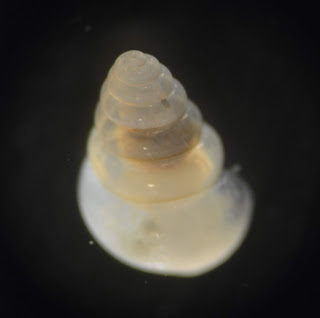Captured butterflies

I love larval traps. I love pouring out a dish full of preservative, scanning the clear liquid and seeing nothing with my naked eyes, wondering if there is a single organism in the sample. I love placing that same dish under the microscope, adjusting the focus, and being transported into a whole new world. I love the surprises that await me under magnification . I love finding preserved larvae, sorting them into categories by shape and size, then pulling out books to identify them . I love the process of discovery. Today, I spent some time at the microscope going through larval trap samples from the Arctic. I built the traps myself at WHOI in 2017 and worked with German and Norwegian collaborators to deploy them on moorings in the Arctic. The first set of traps was collected in August of this year , after a year underwater. Limacina retroversa , photographed at 50x magnification I had no idea what I was going to find in my larval traps, so I excitedly cracked open my first...


